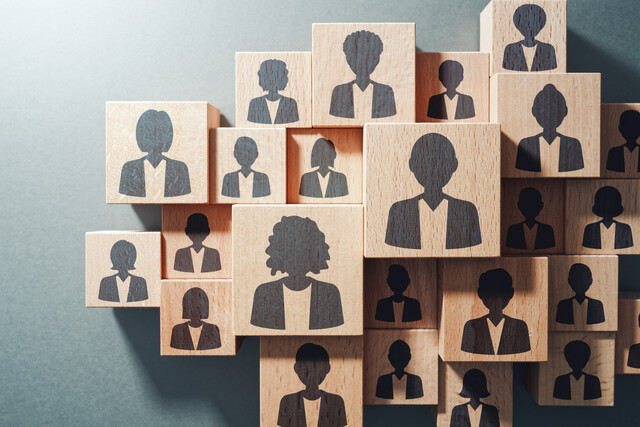Just as community development has changed over the course of its history, so will it continue to do so for years to come. There are enough changes that occur in society over a few years' time that it's likely to think that there will be an impact on community development's progression. If the community development process does not change as society and communities change, then it will lose its effectiveness and value. Change is, ultimately, an inevitability that everything and everyone must one day face. Not taking that idea seriously when trying to understand community development can impact the process' effectiveness in the future and the effect is has on communities.
This article will look at the future of community development and what it may hold. Some of the many factors involved and the areas that may be affected the most by progress will be discussed. The information in this article is only a sample of what experts suggest may occur in community development's future based on current data-it should NOT be used as a guarantee and may not be applicable for all communities.
Why Should Leaders Consider The Future Of Community Development?
For community leaders, paying attention to the ways in which community development can progress in the future can help them avoid issues further down the line. Changes in community development are definitely going to have an impact on the communities that use the process to improve themselves. Discrepancies between the practices and methods used in the development process verses the social norms present in a community can open up the path for things to stagnate. Trying to improve upon a situation or remedy a problem using means that are no longer relevant or effective won't have the desired effect-it can even generate more problems. Taking into consideration the impact that potential changes can have on communities and the community development process is a precaution that can pay off when those changes actually happen.
Community development's future is certainly going to be different from both its past and present. There are different issues that are already beginning to develop in communities and the process is becoming increasingly complicated as it tries to address them on multiple levels.1 The different factors and aspects of society are already changing at a rapid rate and impacting communities in a variety of ways-health care, food costs, energy usage, income, etc. Research groups, like some of the CDCs, are already testing new solutions that can handle the workload with better, more efficient results. Current solutions are not having the impact that they once did, and many of the issues that community development seeks to fix are continuing and returning despite best efforts.2 The only question is, what is the future going to hold for communities and what can be done to prepare for it?
One of the biggest areas that is going to be different in the future is the resources used in community development. The things that are going to be necessary in order for improvements to even work, let alone be properly implemented, are going to be different from what is used now. Different approaches towards community development are going to use different resources and supplies, that is a given. The onset of sustainable development in recent years is a prime example of that; it's new enough that many of the resources that are used during the process are not of the "normal" variety that is traditionally expected.3
Where community development resources come from is also something that is expected to change in the future as much as what resources are used and how. More communities are attempting to become self-reliant when it comes to the resources they use, so they are trying to use what is locally available. Part of it is a cost issue-prices rise the farther a resource needs to travel in order to get to where it will be used-but it's also a popular trend that has proven to be beneficial when used. Dependence on outside forces is something that is being viewed, both in communities and in society, as something that doesn't help in the same way it once did. There's also an issue that some natural resources are being used faster than they can be replaced, which means that somethings are likely to run out if usage rates don't slowdown.4
The structures of community development and society are evolving at a steady rate, which is causing a shake-up in the available roles.5 As new roles are being created, old ones are fading away and dying out. They have ceased to serve a purpose that may not even exist anymore and are being pushed out to make room for ones that still have value. Even the roles that still exist may not function in the same way. The federal government's role in community development, for example, is slowly dwindling as communities lose faith in what government agencies and leaders can offer and begin excluding them where possible. They are no longer the instigators of development and change in communities; if anything, they're a last resort.
It's safe to say that there's quite a bit of growth occurring in the world. The global population alone has jumped from 2.5 billion people in 1950 to 7 billion today with steady increases expected in the years to come.6 Communities themselves are getting bigger in both population and physical size. The amount of things available are also increasing and some of them are also increasing in their size-homes, cars, and other products, for example. The value that people place on certain things like relationships and interests are also growing. The aspects of society are adapting to these increases-some slower than others-as they happen. For many, this growth translates as a sign of progress of any kind.
Unfortunately, not all growth is being viewed as a positive thing. Consumption of resources is increasing. There is growth in the amount of waste that communities generate. Debt-personal, business, and federal-is getting bigger.7 The cost of living is increasing, whether it's food, housing, shelter, transportation, or healthcare.8 There are greater gaps between different socioeconomic status and social classes that are still growing. The list goes on, and on, and on. Such negative instances of growth are more than likely going to generate serious problems for communities and their residents the longer they continue. Many of these issues will be the future targets of community development plans and tactics.
Cultural Shifts
Culture is one of the things in society that is constantly evolving with each new generation. What is valued in one area or by a certain demographic is not seen in the same way by another. These cultural shifts can happen gradually or suddenly-think about social trends that have sprung up and then quickly faded into obscurity. The circumstances influencing the culture of a community can easily lead them to change. What was once the case in a community may not be the same in a year's time. The things that were of value to the members of a community are certainly going to changes and morph as time passes, and the community development process is going to reflect that.
One of the most common and noticeable ways that culture has shifted in communities in recent years is in how things are valued and prioritized. For the longest time, the professional world placed a stronger focus on work that generated a high return on investment and profit. Now, there's more of a value being placed on the social impact of a person's professional work.9 Things that were once seen as unconventional or a non-issue are now being focused on as normal parts of society. Values are changing, all because of changes in culture that are occurring over time.
Economic State
Economic changes-good or bad-are always going to be a factor when discussing the future of community development. The status of the economy will often dictate what issues are present in a community and what options are going to be available to fix them. Even on its own, there is quite a bit of concern about what direction the economy will take next. Recessions and slow markets are issues that are typical in the current economy, with their occurrence being documented enough that they can be predicted and monitored by experts.10 However, just because the economy is in a certain state now that is considered acceptable doesn't mean that it will continue to stay that way.
The fluctuations in the economy mean that there are going to be times when communities take a beating. Currently rising issues surrounding income inequality suggest that such instances are going to be more frequent, especially if nothing is done to remedy them soon. There is enough evidence and expertise available to gauge what the effects will be on communities of all kinds. How community development will be used in those instances can be predicted-to a degree-using that information. The cyclic state that the community development process often takes can also be adjusted to address those economic changes as they occur, giving the community just a bit of an edge over the challenges that may be up ahead.
Formal and informal policies on any level in the community are bound to change. New laws are passed and social rules are modified all the time. Society, in its constant state of change, is going to need some means of guidance in order to keep things from descending into chaos. Policy changes are going to happen and they need to happen, whether you like it or not.
So what does that mean for community development? Pretty much everything. Changes in policies can put forth new restrictions on what actions and improvements can be taken. Even the ways in which the process works can be hindered by changes in its own methodology, which is a kind of law system that governs it. Bureaucracies already generate a lot of red tape for communities now, so thinking about what they can do in the future is almost a nightmare waiting to happen. New policies can also help make it easier for communities to implement the process and solutions, not just impede them. Of course, the political landscape on all levels of leadership-which changes with every election cycle-and the details of these new policies are going to determine which way things go.
Technological Advancements
Technology is advancing quickly, much more than anyone outside of the tech industry realizes. The inclusion of different types of tech-like social media and the internet-have acted like the flood gates of change in community development. How something as simple as information is analyzed and collected is impacting how communities operate.11 The applications of technology in anything, not just community development, are seemingly limitless due to the advancements being made. Most of those advances are just in the last few years and are increasing in quantity and quality. Just imagine what could possibly be the case in the future and how it can impact lives!
In some cases, technological advancements can be used to literally help predict aspects about the future. The amount of factors that can contribute to the changes in community development are too numerous for any one person to calculate all of the potential outcomes that are possible. Analysis using tech can quickly and efficiently take the data and predict what can happen for any facet of community development. It can be continuously updated with new data and new tech in order to get a clearer picture.
























